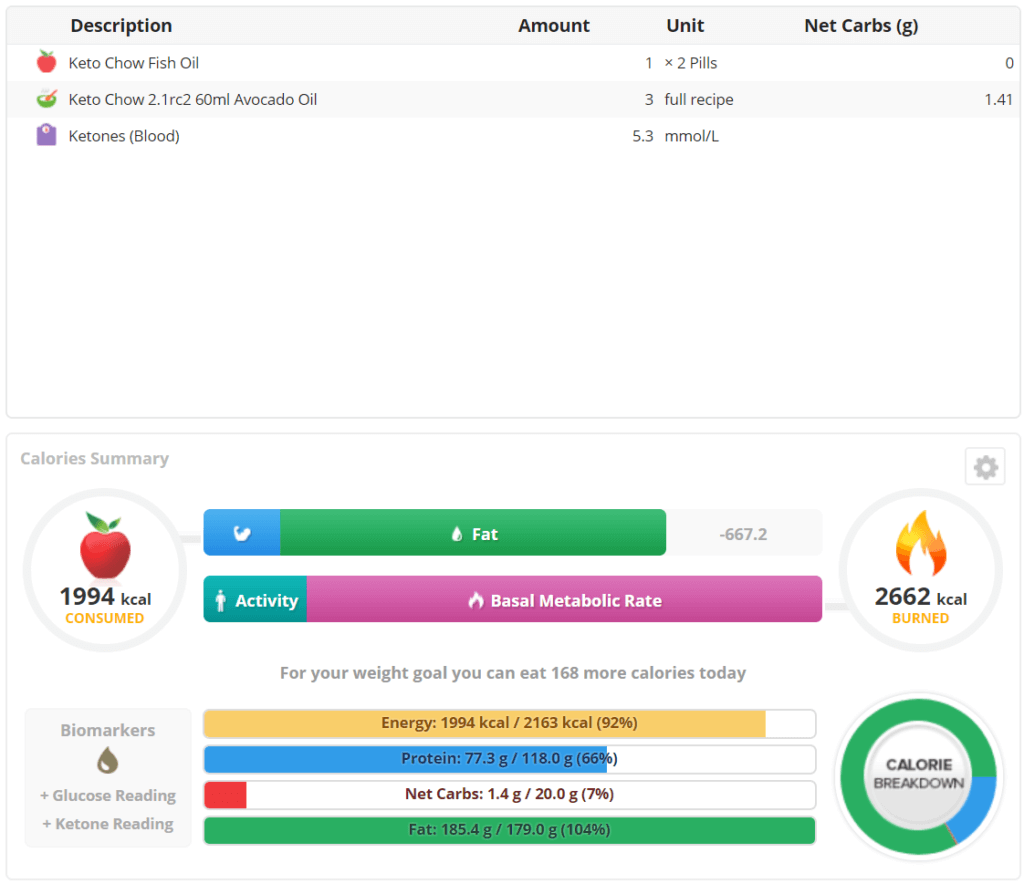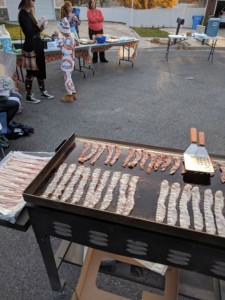Keto Chow in Women’s World Magazine
Women’s World was doing a story about using Keto Smoothies – they contacted us here at Keto Chow to see if we knew people that had experienced success using Keto Chow. They also wanted to get some information from me regarding the efficacy of shakes/smoothies and a ketogenic diet. There’s a bit of a disconnect between my original responses and what was published =) Don’t get me wrong: I think that if 1 woman reads the article, starts doing Keto, and changes her life then the article and interview were a resounding success.
If you want to read the whole article, it should be available on newsstands right now.
Anyway, I thought my original responses to their questions were pretty good so I’m going to publish them here:
First, I need to know a little more about you. I read that you lost weight yourself (and your wife as well!) Can you tell me a little more about that including how much?
As of right now, I’m maintaining a 40lb weight loss over 4 years. Outside of ketogenic diets, that’s so infrequent that I’m considered a “unicorn” =) I started keto back on Oct 21, 2014. My wife was doing Whole30 (which is a lot like Paleo) and decided to join in on the fun when she saw my success (and her best friend went Keto, so they could meal-prep together). She’s down 30lbs.
Our story is about women who used keto smoothies to lose weight. They turned to keto smoothies because they’re easy to prepare, kept them feeling full and they could take them on the go. Jumping right in: Are smoothies/shakes a great option for busy people who are following keto? Why or why not?
One of the biggest problems with doing keto can be learning what you can and what you cannot eat. You’re turning the dietary recommendations on their head: you need to eat healthy fats, especially quality saturated fats. You need to get more salt. Whole grains are off the menu. It goes on! For people new to doing keto it can be daunting and potentially dangerous if they aren’t getting the right amount of electrolytes. This causes the so-called “keto flu” that’s one of the chief reasons people try keto and stop within a few days. It’s entirely avoidable by simply adding more salt to your diet but people may not know that. I see using a well-formulated smoothie or shake that is specifically designed for a ketogenic diet as an extremely useful tool, both for people new to a ketogenic way of eating, as well as experienced users that need something to get them through the “boring” meals and on to cooking a fantastic meal with family or friends. Having something you can turn to that you KNOW will be getting you the right nutrients is very nice!
Studies have shown that using smoothies/shakes as meal replacements can help dieters lose weight faster and without hunger. Do keto smoothies/shakes as meal replacements have the same effect? Why or why not?
I think they can, and in my experience (and the experience of thousands of people I’ve interacted with) it holds true. I think one of the main reasons it can help accelerate weight loss is that you have your nutrition tightly controlled for the meals you’re using a well-formulated keto shake. It should have ⅓ of your daily nutrition and the correct amount of protein and fat for what you need. Getting the right micronutrients (vitamins, trace minerals) lets your body have what it needs to heal; and when your body is healthy, weight loss comes along! Now I want to be clear on this: I’m talking about shakes that are designed for keto and have the right amount of nutrients in them, this isn’t just randomly throwing ingredients at a blender and drinking it. You’d need either a well-researched recipe or a product that’s been engineered and tested to be complete. A random shake/smoothie would only be suitable for occasional use (maybe 3 times a week and not more than once a day) whereas one that’s complete can be used as often as you feel like it. Personally, I’ve used the recipe I came up with for all 3 meals with absolutely no other food for up to 6 weeks and I know of others that have gone as long as 6 months for various reasons, but for most people: 1-2 times a day with some baked salmon or a steak with their family is more appealing!
Do you think keto smoothies/shakes might help a keto newbie do a better job of keeping carbs down and fat up?
Oh, absolutely! Both are particularly difficult as carbs tend to be in everything that’s convenient, and at the same time, they’re usually low fat! Having a shake that you can control the amount of carbs, and mix in some delicious heavy cream, avocado oil, or even straight-up avocados is phenomenal. Hit the right balance and you’ll be satiated and happy and look forward to the next one.
Can overeating keto-friendly foods slow results—especially in older, sedentary women?
Yes. Most “keto friendly” snack foods are low in carbohydrates and work great for occasional use, but you eat 4 or 5 and suddenly you’ve blown through half your carbs for the day. Also, many are high in protein and low in fat, not having the fat in there makes them less filling and too much of the protein can hamper your progress. This effect is especially amplified in older women who will often have to work especially hard to stay on track. They’re really facing an uphill battle. One thing that helps everyone is to eliminate snacking. Try to only eat at mealtimes and let your body enjoy having a rest from elevated glucose and elevated insulin. If you can, you might even try grouping your meals together: skip breakfast, eat a late lunch and an early dinner. That “intermittent fast” will get food out of the way and let your body heal!
Would keto smoothies be a good way to help prevent overconsumption of keto foods?
If you’re not experiencing the results you want with a keto diet, using a well-formulated shake or smoothie will indeed help keep you from having too many “keto friendly” foods. Especially if you’re adding the right amount of fat for your needs to the shake, you may even have a hard time finishing it all because you’ve gotten your fill.
Do you think keto smoothies have the potential to help some women lose weight more quickly? If so, what type of women might benefit most?
I think that women who have a busy schedule, don’t know how or what to cook, or that simply need a convenient go-to meal would benefit the most from using smoothies as part of their keto diet. Having the nutrition, calories, carbs, and more so tightly controlled gives women the opportunity to meet or exceed their goals or better health and weight loss.
What are some guidelines for making a keto smoothie? (ie: ? amount fat, protein, veggies to use or not use, fruit to use or no use, etc)
The key to making a good keto smoothe right is going to be to get the right amount of quality fats, adequate protein, keeping the carbs as low as possible, and getting the right micronutrients. There are a bunch of online “keto calculators” that can help you establish how much fat, protein, and carbs you need in a day and you’ll want to plan accordingly. You’ll need to limit the amount of fruit, remember: it’s nature’s candy and your liver doesn’t care if the sugar is “natural” or “organic” – it just sees sugar. Adding a few berries for a touch of flavor usually works well and doesn’t add too many carbs. Mind you: we’re talking about 3-4 blueberries or a pair of strawberries, not a full container! Avocados are excellent and full of potassium (way more than a starchy banana!). If you can tolerate dairy, look for heavy cream or unflavored and unsweetened full-fat yogurt. Milk, especially skim milk, is loaded with sugar and should be avoided. Unsweetened almond milk is OK to replace water but it’s low in fat so plan accordingly. Green leafy vegetables are a good addition but you need to avoid tubers and other vegetables that grow in the ground like CARROTS – the plants store sugar and starch in the roots and you don’t want that! Don’t be afraid to add salt to your smoothie too. That salt is vital to keeping the “keto flu” from ruining your day. Avoid seed/vegetable oils, they aren’t what you want – olive, coconut, and avocado oils are actually fruit oils and work great!
Any particular ingredient or ingredients that you feel would make a keto smoothie particularly powerful?
- Avocados are absolutely amazing and work great if you’re mixing up your smoothie in a blender. They have high-quality fats, lots of potassium, are very low in carbohydrates and taste pretty good (to me!)
- MCT Oil is a fantastic source of great fats made from refined coconut or palm oil. Your liver turns it right into ketones which can help get you into a deeper state of burning ketones (or “ketosis”). Be aware that most people can only tolerate 1 tablespoon at a time of MCT oil, trust me: you don’t want to overdo it!
- Almond or other nut butters are also a great addition in limited quantities. They give a great taste and add some quality fat and protein. Make sure you don’t go overboard, they have a fair amount of carbs.
- Erythritol is probably the best thing to use to add some sweetness to your own smoothie recipe. It doesn’t hurt dogs like xylitol, doesn’t raise blood sugar, and pretty much counts as 0 carbs for most people. The powdered version dissolves more easily.
- Heavy cream is fantastic (and what I use for most of my own shakes!) It adds an amazing taste, great creamy mouthfeel, is low in carbs (0.4g per tablespoon), and the fat profile is exactly what you want. People with lactose intolerance can often handle as much as a half cup per meal without problems.
What are the best fats to add to a keto smoothie and why?
The best fats for your body are going to be the ones that don’t oxidize and that means saturated or mono-unsaturated fats. Poly-unsaturated “vegetable” (seed) oils react easily and cause all kinds of stress on your body and damage to your cells. It’s a bit much to go into here, but there’s never been a link between saturated fat and heart disease (though they’ve spent 50 years trying to prove, unsuccessfully, that there is one!). To the contrary, studies show that eating more saturated fat is associated with lower MORTALITY or lower risk of dying from everything (which is really the goal, right?). That means dairy, avocados, coconut oil, butter, and olive oil are what you want and the processed seed oils are what you do not want. It’s pretty much the opposite of what the dietary guidelines USED to say back in the 80s, they’ve been slowly changing those guidelines over the last few years without calling attention to the changes.
If someone wants to purchase a pre-made keto shake, what should they look for and what should they avoid?
Look for something that’s not just a protein “snack” – too often you’ll find a shake that’s been rebranded as “keto” just because they added a little MCT oil, or they’re adding lab-created ketones. For a smoothie to be something you can use consistently, and not have it leave you hungry and with a vitamin deficiency, it needs to be designed for complete ketogenic nutrition. The label will have a bunch of vitamins and minerals that may be hard to pronounce but don’t let that deter you, all vitamins are “chemicals”. I’d recommend staying away from shakes that have “BHB” or ketones added to them, those are great for performance athletes or seizure patients; but if your goal is to lose weight, you want your own body to be making ketones for you (for free!). Look for “nutritionally complete” and I wouldn’t be worried if it’s not “organic” or “all natural” – with a keto diet you’re eliminating the stuff that should concern you simply by getting rid of processed carbohydrates.
If someone is replacing two meals a day with a keto smoothie/shake, how much would you say they could lose in 48 hours?
For optimal success, keto needs to be an all-in thing. You can’t have two keto meals, then eat french fries and donuts and expect it to work. Doing 2 meals using a quality keto shake and then having a good keto dinner is a great way to go. When you first start doing keto, there’s often a “whoosh” of water weight loss that can happen in 48-72 hours. It’s your body using up sugar bound to water in your muscles and liver – yes it’s water weight, but it will stay off so long as you stick to keto. Now: not everyone experiences the “whoosh,” so don’t get discouraged. I’ve seen people healthily lose 8lbs right off the bat and continue losing 10-15lbs a month, but your results may vary and it’s much harder for women than for men. Men tend to lose pounds and women tend to lose inches, especially at first. Your body is doing a remodel and that may not show on the scale at first. The key is to Keep Calm and Keto On (or “KCKO” as we say)!
And why would you say this would be a great jumpstart for someone who is just trying out keto for the first time?
Using smoothies is a really great way to control your food and give you something actionable you can work on. Especially at the beginning when you’re new to everything and unsure what you can or can’t eat, it can lead you through the rough patches to success.
If women start this before an event do go to during the holiday season will they be able to drop weight in a short time? Why or why not?
Many women will be able to use keto to quickly drop weight before an important event, it’s the release of the water weight that goes along with starting keto. Usually even more important than the initial weight loss will be a reduction in water retention, inflammation, puffiness, and looser clothing. If you’re planning on starting a keto diet, take some measurements and some “before” photos so you can track your progress. The scale isn’t the only measure of success, so don’t get discouraged if your husband loses 10lbs after a week of keto and you don’t. And be aware that for greatest success, keto is a way of life – not just a quick diet. You can’t expect to keep off the weight if you go back to eating what made you heavy to begin with!
What’s the most you’ve seen someone lose in 24 hours on keto?
I know a lady that lost 5lbs in 24 hours (and kept that off).
In 48 hours?
8lbs
What’s the most you’ve seen someone lose in total on keto?
I know several people that have lost over 100lbs (and kept it off for years!), I think the most weight loss I’ve seen is 250lbs.
What words of advice do you have to readers who are interested in adding a smoothie/shake as a meal replacement to their keto diet?
- If you’re making your own recipe, I’d recommend adding the ingredients as well as your other food into a good tracking app like “cron-o-meter” so you can make sure you’re getting the right nutrition, keeping your carbs down, and getting enough electrolytes.
- If you’re using a recipe you found, pay attention to the nutritional information provided, and you might want to do the same “track it in an app”!
- If you’re thinking about buying a pre-made shake mix, make sure it has the nutrients you need and that it’s not just a protein snack. Look for shakes that allow you to customize the amount of fat in each meal so you’re not getting too little or too much.
And finally, here is what was condensed out of my responses:
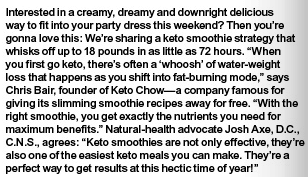 |
 |

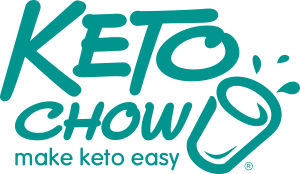

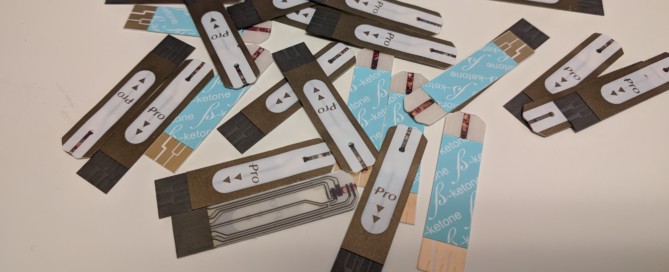
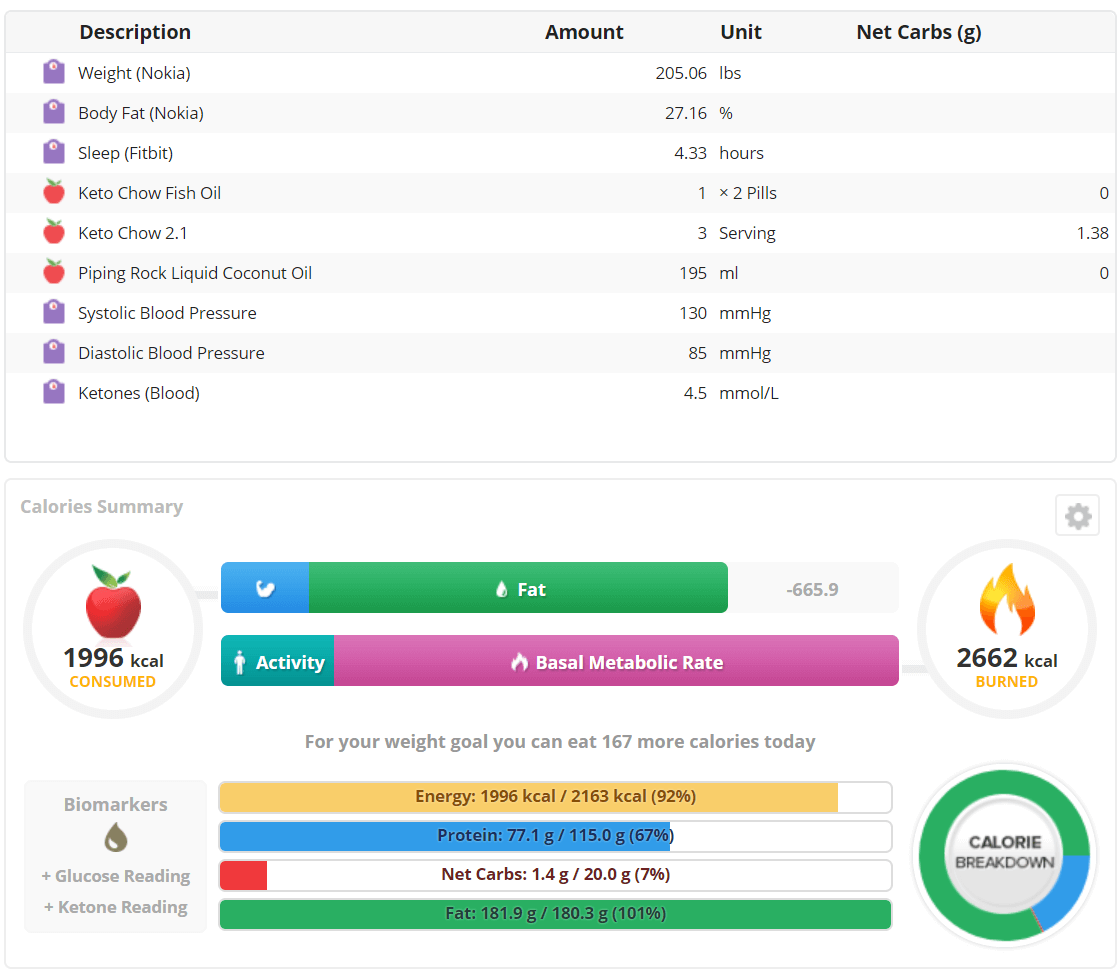
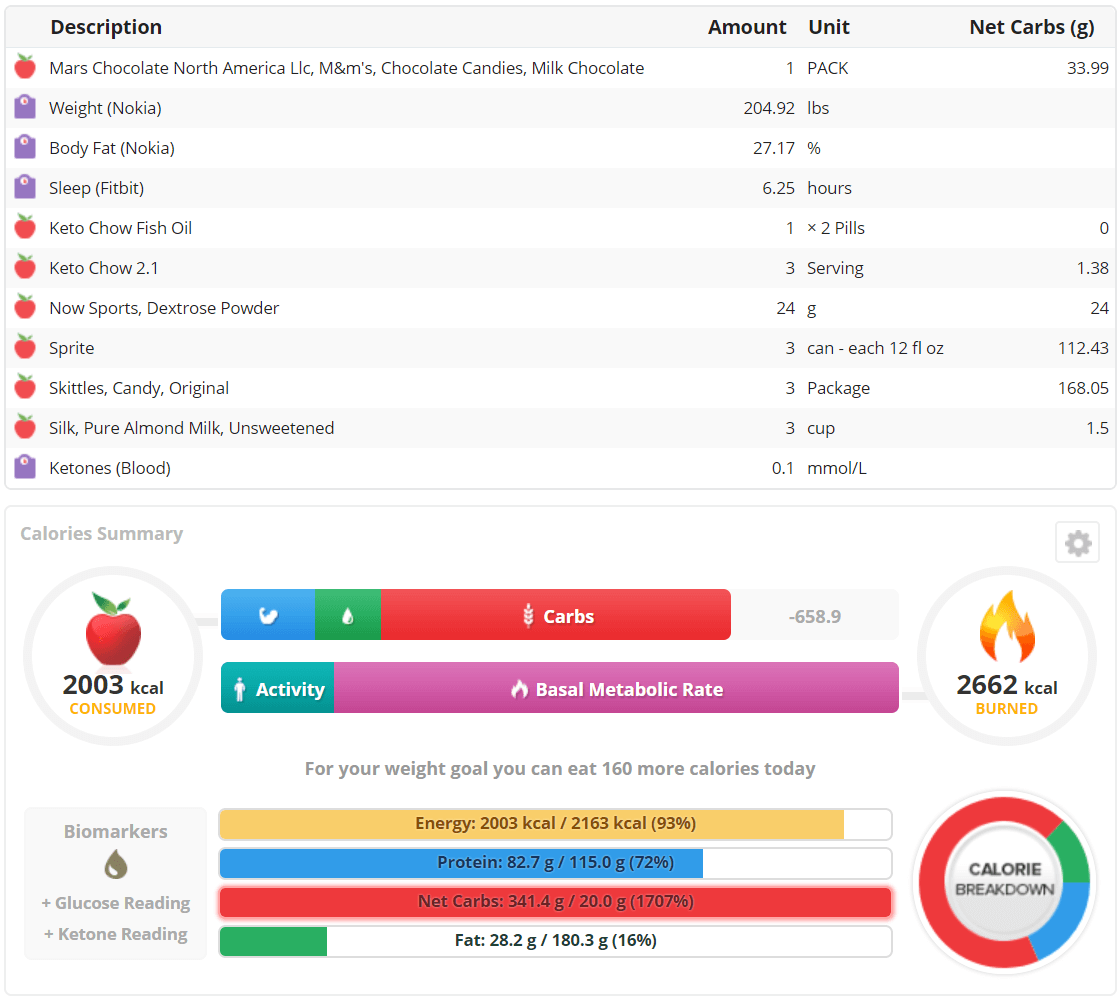
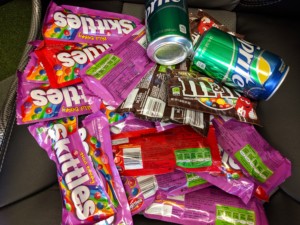

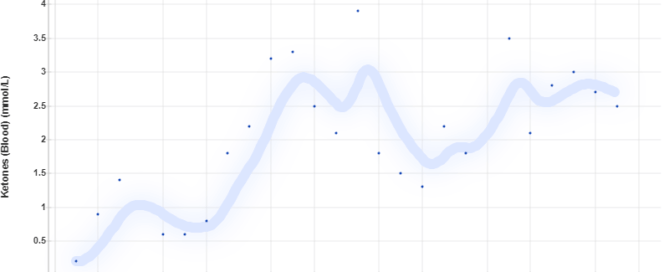
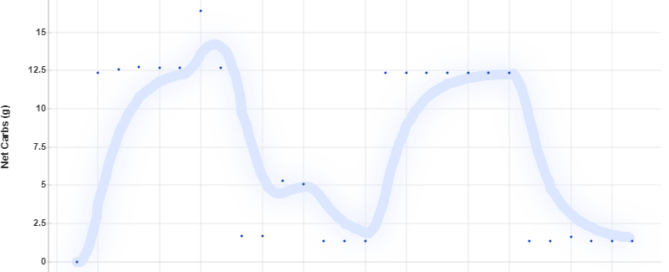
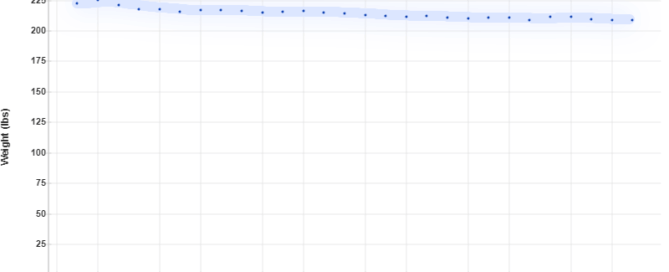
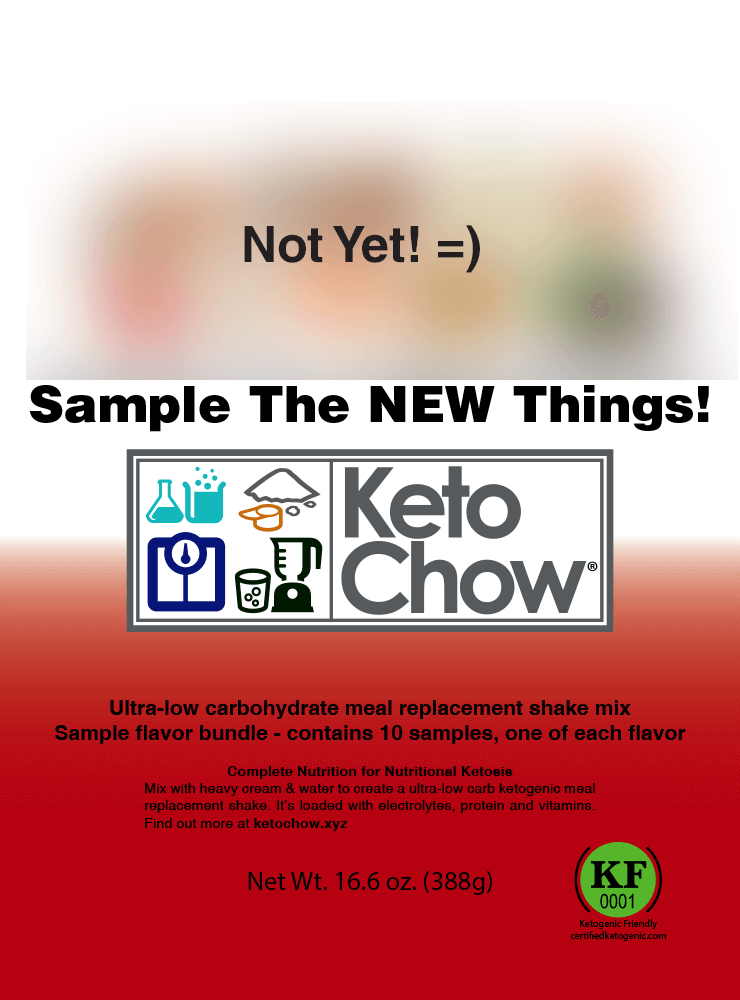


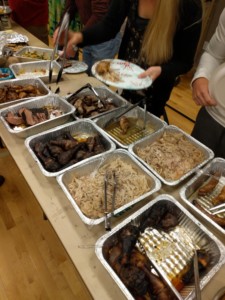


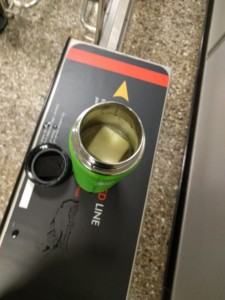
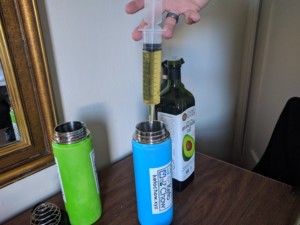
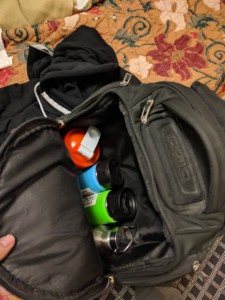 The rest of my meals were made in my HydroFlasks or Blender Bottle using Avocado Oil. I got a great tip in a comment that I should use a large syringe to measure the oil. That worked exceptionally well with a 60 cc/ml syringe. I would pour the oil into a disposable plastic cup and then fill up the syringe, squirt it into the container and repeat for all 3 containers. The only clean-up was wiping off the syringe tip with a tissue. I would have sandwich bags with the powder pre-measured in my backpack; and as soon as I got to a place with either ice water (regular Keto Chow) or hot water (the chicken soup one) I would prepare 2-3 of the bottles.
The rest of my meals were made in my HydroFlasks or Blender Bottle using Avocado Oil. I got a great tip in a comment that I should use a large syringe to measure the oil. That worked exceptionally well with a 60 cc/ml syringe. I would pour the oil into a disposable plastic cup and then fill up the syringe, squirt it into the container and repeat for all 3 containers. The only clean-up was wiping off the syringe tip with a tissue. I would have sandwich bags with the powder pre-measured in my backpack; and as soon as I got to a place with either ice water (regular Keto Chow) or hot water (the chicken soup one) I would prepare 2-3 of the bottles.